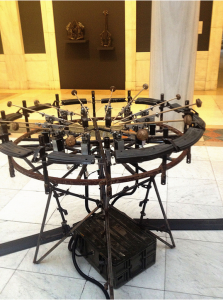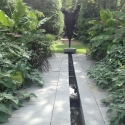An Art Trifecta in Pittsburgh
You can see the 2013 Carnegie International, The Mattress Factory, and The Andy Warhol Museum in one day!



If you live in the New York area, you can visit all three venues in a day. One has to get up early in the morning and leave from Newark to catch a United Airlines flight to Pittsburgh. The flight departs at 8:21 a.m!


The Carnegie International is an exceptional exhibition. Thirty-five artists are represented from 19 different countries all over the world. As we walked into the venue, we came across Pedro Reyes from Mexico. His work is astounding—he has built musical instruments and sculptures from voluntary donations of weapons from Mexico, which were displayed in the rotunda; they are truly fantastic. Reyes seems to be everywhere. He is also showing a huge installation at the newly renovated Queens Museum in New York at this moment.


British “Bad Girl” Sarah Lucas installed a large body of provocative work at the Carnegie International. Her sculpture reflects the narrative of how the female body is viewed.
The Carnegie Museum of Art also displays pieces that were purchased from previous Carnegie Internationals, including works by such renowned artists as On Kawara, Agnes Martin, Rirkrit Tiravanija, Mark Grotjahn, and Tony Oursler.


The Mattress Factory is a foundation open to the public, which invites artists to join their residency program and exhibits their works. Artists such as James Turrell and Yayoi Kusama have been part of their program and their works are on view.


A “must see” when visiting Pittsburgh, The Andy Warhol Museum is a jewel of a museum. On view when we visited was a show of photographs by Yasumasa Morimura. No matter, one still gets a feeling that this is a Warhol shrine and his brilliance shines through.
We departed the museum to the airport and were back home by 7:30 p.m. A full and rewarding art day.
The 2013 Carnegie International runs from October 5, 2013–March 16, 2014 at the Carnegie Museum of Art.
Photo Gallery[nggallery id=15]







































